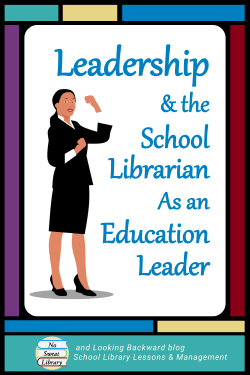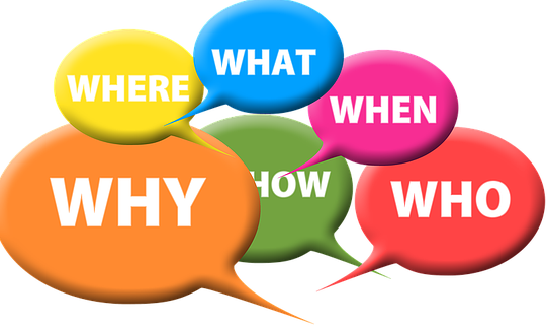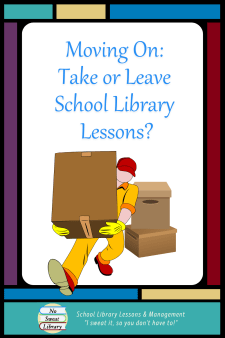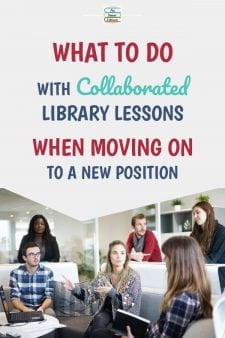 As each generation of education scholars researches how a child learns, they pass that knowledge on to the next generation of scholars and teachers, who then build upon the foundation to discover even better ‘best practices’. Classroom activists who advocate these discoveries often struggle against fellow teachers and supervisors who are more comfortable with their own generation’s methods. Thus, only when visionaries achieve leadership positions can they truly influence how we educate our youth.
As each generation of education scholars researches how a child learns, they pass that knowledge on to the next generation of scholars and teachers, who then build upon the foundation to discover even better ‘best practices’. Classroom activists who advocate these discoveries often struggle against fellow teachers and supervisors who are more comfortable with their own generation’s methods. Thus, only when visionaries achieve leadership positions can they truly influence how we educate our youth.
How, then, does a visionary who is finally in a leadership position truly effect change in the classroom, in the school, and in the educational community? I believe the true Leader embraces 3 goals: empowerment, organization, and communication.
EMPOWERING OTHERS
 A very wise principal of mine, Dr. Frank Taylor, once said, “You gain more power when you give it away.” Control is not leadership. Even the best leader cannot do everything, so the true Leader cultivates other leaders in the school and helps them develop their strengths. Then, the true Leader gives them responsibilities to use those strengths and lets them soar.
A very wise principal of mine, Dr. Frank Taylor, once said, “You gain more power when you give it away.” Control is not leadership. Even the best leader cannot do everything, so the true Leader cultivates other leaders in the school and helps them develop their strengths. Then, the true Leader gives them responsibilities to use those strengths and lets them soar.
I believe this applies to students as well as to teachers. Student successes bring respect to us. We can help students stand by their work product by engaging them to refine the snags toward even higher achievement. Anyone is empowered to become a leader when they are confident they can find answers to solve problems.
ORGANIZATION THROUGH COLLABORATION
There is truth in the saying, “You can’t see the forest for the trees,” especially in education. Too often we are inundated with multiple directives, and nothing seems to fit together. In any school, some folks are skilled at time management, some excel at processes and procedures, and some have a real knack for visual simplification and presentation, so the true Leader invites collaboration to refine directives into an organized plan for implementation. Even if it takes extra time, a Leader knows an organized plan will be accepted more readily and easily than individual, unconnected changes. Additionally, a well-organized plan takes into consideration the needs of each and every teacher, minimizing the discomfort of change. We work hard to individualize for students; a good leader recognizes that teachers deserve the same.
CONSISTENCY IN COMMUNICATION
 Finally, nothing works if no one knows what’s going on. A true Leader establishes regular and consistent communication through standard channels, be they print, audio, video, digital, or face-to-face. If we know when and how to expect certain communications, we plan ahead and are more likely to pay attention. School Leaders are wary of interrupting over the PA, which is disruptive—too many become tiresome and both teachers & students tune them out. Even email can be overused—rather than persistent, detailed explanations that invite deletion, shorter pithy communications generate interest and invite face-to-face collaboration. Most importantly, a Leader recognizes that frivolous and repeated changes to what has already been communicated cause confusion, mistakes, and resentment. A true Leader makes sure their communications align with the goals of empowerment and organization.
Finally, nothing works if no one knows what’s going on. A true Leader establishes regular and consistent communication through standard channels, be they print, audio, video, digital, or face-to-face. If we know when and how to expect certain communications, we plan ahead and are more likely to pay attention. School Leaders are wary of interrupting over the PA, which is disruptive—too many become tiresome and both teachers & students tune them out. Even email can be overused—rather than persistent, detailed explanations that invite deletion, shorter pithy communications generate interest and invite face-to-face collaboration. Most importantly, a Leader recognizes that frivolous and repeated changes to what has already been communicated cause confusion, mistakes, and resentment. A true Leader makes sure their communications align with the goals of empowerment and organization.
STAY INFORMED
When I re-entered education in the 90s, I realized that the ‘new’ ideas I’d learned during college had become accepted pedagogy and were being widely implemented, because my generation had moved into leadership positions. I am proud to be part of a group totally devoted to doing what will bring success to all children as they move through their school years. But I am ever cognizant that there is always a new generation whose research uncovers better methods, and true Leaders understand they can’t stand still…they must also remain informed of ‘best practices’ and move their followers forward.
After 25+ years in public education I’ve had great leaders and some not so great. My 2 favorites—Ms. Lynda Opitz and the aforementioned Dr. Taylor—truly understood empowerment, organization, and communication as essential for great leadership. Their influence encourages me to be a better teacher and librarian, and I try to emulate their leadership qualities when I work with other teachers.
School leadership can have a huge impact on the School Library Program.
Read 5 Things You Want a Principal to Know About the School Librarian.
THE SCHOOL LIBRARIAN AS LEADER
 Of the 5 facets of being a school librarian—experienced teacher, instructional partner, informational specialist, program administrator, and school leader—four of them cannot be effective unless we are a school leader. Does this mean joining committees or volunteering for non-contract tasks? It can…but in order to be respected at those pursuits, we must be respected as a competent certified School Librarian, as the supreme authority of our profession in our building. How might we do that?
Of the 5 facets of being a school librarian—experienced teacher, instructional partner, informational specialist, program administrator, and school leader—four of them cannot be effective unless we are a school leader. Does this mean joining committees or volunteering for non-contract tasks? It can…but in order to be respected at those pursuits, we must be respected as a competent certified School Librarian, as the supreme authority of our profession in our building. How might we do that?
First and foremost, we must align our school library program with current National School Library Standards. The American Association of School Librarians, a division of the American Library Association, has provided many materials to assist us in learning and using our standards, including crosswalk documents to integrate with other curricula. All these can be found on the AASL National School Library Standards website. It’s our obligation to our professional certification to know and use these documents.
Another source of information and inspiration is the Future Ready Schools initiative. Their Future Ready Librarians Framework helps school librarians become leaders in their buildings and districts. Keep up with FRL by joining their Facebook group.
Join the international LM_NET listserv. With nearly 12,000 members, this group can help you solve problems and develop innovative lessons that will have teachers flocking to collaborate with you.
Finally, let social media help you by joining a Facebook group for School Librarians. My personal recommendation is The School Librarian’s Workshop, created by Hilda K. Weisburg, a true librarian leader, and with more than 10,000 members.
A School Librarian also needs to embrace those 3 leadership qualities:
- empowering students and teachers through our lessons and collaborations
- exhibiting strong organizational skills in the way we manage our library facility and the school library program
- regularly & effectively communicating with our entire school community through our School Library Website, social media, and provided school channels.
Encompassing all the above allows us to naturally slide into a leadership role in our school, among other librarians, around the community, and in the larger library and education world.






